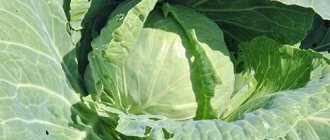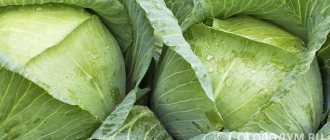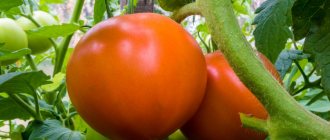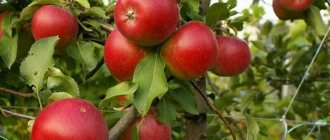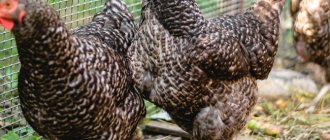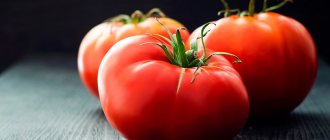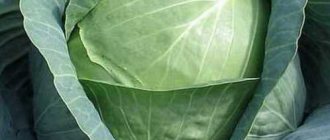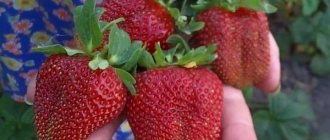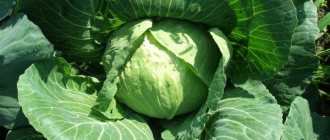Many gardeners are involved in viticulture. Moreover, every year grapes occupy areas not only in the south, but also in risky farming zones. Some winegrowers grow it on a large scale to please Russians with its sweet, aromatic berry. Others plant grapes for their own needs. Today you can grow grapes even in the north, as our readers often write about in reviews.
There is nothing to be surprised about here, because breeders are developing more and more early-ripening grape varieties. One of these new products that delight gardeners with delicious berries is Super Extra grapes. This is what is most often grown by residents of the northern regions. This hybrid grape has a short summer due to its early ripening characteristics. The features of the variety, rules of care and cultivation will be discussed.
Advantages and disadvantages
When deciding to start growing “super extra” grapes, you should familiarize yourself in advance with the list of its positive and negative characteristics.
The main advantages of the variety for gardeners and winegrowers include:
- Large fruit.
- Resistant to frost and other adverse weather conditions.
- Good transportability and keeping quality.
- Abundant yield.
- Immunity to diseases characteristic of the culture.
Also, the indisputable advantage of the variety is that the berries on the bushes ripen evenly and have a pleasant taste.
The “super extra” has few disadvantages, but there are still some disadvantages:
- The probability of the formation of berries of different sizes on a bunch.
- Dense and tough skin.
- Tendency to phylloxera.
In addition, the bushes need timely pruning, aimed primarily at normalizing the yield. Otherwise, not only the quality of the berries deteriorates, but also their ripening period increases.
Characteristics of the “super extra” grape variety: description, photos and reviews about it
“Super Extra” is a grape variety that is rapidly gaining popularity among winegrowers and amateur gardeners. This is explained not only by the many positive characteristics of the variety, such as resistance to frost and ripening time, but also by the high commercial qualities of the crop and the pleasant taste of the berries.
Origin
“Super Extra” grapes are the result of breeding work by amateur gardener E. G. Pavlovsky, obtained by crossing the varieties “Talisman”, “Cardinal” and a mixture of pollen of other species. Originator: Federal State Budgetary Educational Institution of Higher Education “Kuban State Agrarian University named after. I. T. Trubilina."
Parents of “super extra” - “talisman” and “cardinal”
Reference! The variety was included in the State Register of Agricultural Achievements in 2015 under the name “citrine”.
History of the Super-Extra grape variety
Another name for the Super Extra variety is Citrine. It was bred by Evgeny Georgievich Pavlovsky, a famous amateur breeder from the city of Novocherkassk, Rostov region. “Parents” of Citrine are hybrid varieties of white grapes Talisman and black Cardinal. A mixture of pollen from other varieties was also added.
The grapes received the name Super-Extra due to their high taste, attractive appearance and adaptability to different conditions.
Ripe berries of the Super-Extra variety resemble the color of citrine stone
It is not necessary to have special education to select grapes. Many modern varieties were bred by amateur winegrowers.
Main characteristics
“Super Extra” is a table grape variety whose appearance is very similar to the “Arcadia” variety. It is also worth noting such super-early varieties as “transformation”, “Veles” and “rumba”.
Maturation period and class
This is a very early ripening variety that requires only 95-105 days to fully ripen the fruit. The exact time when the crop is ready for harvest depends on the climate and weather conditions of the growing region. As a rule, the harvest time falls on the last days of July or the beginning of August.
Bush
The “super extra” grape bushes are powerful, vigorous, young shoots are light green, old shoots are light brown.
The leaves are rich green in color, medium in size, round in shape, five- or three-lobed with weak dissection, jagged edges and light cobwebby pubescence on the underside, the surface is smooth or reticulate-wrinkled. The flowers are bisexual, the degree of pollination is average.
Bunches and berries
The brushes are large, loose, cylindrical-conical in shape, weighing on average 500-800 g , but larger specimens are found, weighing up to 1.6 kg.
The berries are large, ovoid, slightly elongated, grow up to 3.5 cm in length and 2.5 cm in width and weigh on average from 7 to 12 g. The fruits are covered with a durable and rather hard green-yellow skin, which by the time of ripening takes on an amber hue.
The pulp is fleshy, crispy, the juice is colorless, there are 2-3 medium-sized seeds inside . Sugar content when fully ripened is 17.4%, acidity is 6.1 g/l.
Reference! The berries on the clusters have different sizes: the lower they are located, the smaller.
Taste
The taste of the fruit is simple, pleasant, moderately sweet, but they do not have a bright and refined aroma.
Productivity
The bushes begin to bear fruit from the second year after planting. With proper care, up to 25 kg of grapes can be harvested from 1 bush , and the yield from 1 hectare of land reaches 169 centners.
Description of the plant
The bushes are vigorous, prone to overload due to the abundance of berries. The shoots are light green and light brown. The leaves are green and have 5 lobes.
The clusters are moderately loose, cylindrical in shape. The brushes weigh from 350 to 1500 g. The size of the berries is from medium to very large.
Super-Extra grape size is medium to very large
The fruits are white, slightly elongated, egg-shaped, with dense skin. When ripe they acquire a light amber hue. Their taste is simple and pleasant - rated 4 out of 5 on the tasting scale. The average weight of the berry is 7–8 g. The pulp is juicy, but nevertheless, in overripe berries it retains its density and they do not lose their shape.
Comparison with analogues
“Super Extra” is far from the only table grape variety with early ripening. However, thanks to its characteristics, it can compete with other varieties.
| Sign | Variety | ||||
| Super extra | Karmacode | Russian Korinka | New gift to Zaporozhye | Blagovest | |
| Ripening period | 95-105 days | 110-125 days | 110-115 days | 110-125 days | 110-115 days |
| Frost resistance | Up to -25 °C | Up to -22 °C | Up to -22…-28 °C | Up to -24 °C | Up to -23 °C |
| Yield per bush | Up to 25 kg | About 25 kg | Up to 12 kg | Up to 30 kg | 6-8 kg |
| Bunches | 500-800 g | 300-500 g | 180-200 g | From 800 g to 1.1 kg | From 900 g to 1.2 kg |
| Taste | Simple, moderately sweet | Tart with a slight nutmeg aroma | Rich, without extraneous flavors | Sweetish with apple aftertaste | Sweet with notes of duchess and aroma of nutmeg |
| Color | Green-yellow with amber tint | Red-violet | Golden with soft pink blush | Greenish white | Green with a yellowish tint and an amber tan |
| Disease resistance | Average | Average | Average | High | Average |
| Shelf life | A few months | Up to 3 months | Until autumn on the bush | Up to 3 months | A few months |
| Sugar content | 17,40% | 16-22% | 22-23% | 16-19% | Up to 22% |
| Acidity | 6.1 g/l | 9 g/l | 5-6 g/l | 5-6 g/l | About 8 g/l |
Landing
During planting, you must follow certain rules:
- approximately a day before planting, you need to soak the roots in any growth stimulator;
- before planting, you need to trim the roots and trim the shoots, leaving strong and healthy buds;
- a small layer of fertile soil is poured into the planting hole and the heel of the seedling is installed;
- straighten the roots and sprinkle them with soil;
- compact the soil, irrigate and add soil to the growth level.
To ensure that the planted plants do not interfere with each other during active growth, they are planted at a distance of about 2 meters. The distance between rows must be at least 3 meters. If you decide to plant grapes near a building, then you need to retreat approximately 1 m from the foundation.
Features of cultivation
In general, the requirements for planting and caring for “super extra” grapes almost completely coincide with the requirements of other super early varieties. However, some nuances should still be taken into account.
Landing
A favorable period for planting grapes is considered to be spring or autumn , and in both cases there are pros and cons.
In the case of spring planting, young plants do not have to immediately winter in the open ground and they have time to take root and stock up on nutrients. In this case, it is necessary to strictly observe the planting date - by planting seedlings earlier or later than the optimal time, you can slow down their development.
Autumn planting takes longer; seedlings quickly grow in spring without wasting time on adaptation, and during autumn and winter days with above-zero temperatures, the root mass of plants increases. However, there is a risk of losing seedlings at sub-zero temperatures if covering material is not used.
“Super Extra” is unpretentious in soil composition, but prefers light, moist, nutritious soil with good aeration. You can learn about the ideal soil for grapes from a separate article.
Reference! If clay soil predominates in the area, you need to add sand and humus to it at the rate of 1 bucket per 1 square meter. m.
The place should be bright. Despite the fact that the bushes of this grape can develop and bear fruit in shaded areas, the abundance of sunlight still has a more favorable effect on their development and the quality and abundance of the harvest. also need to ensure that the place is protected from wind and drafts, the distance between bushes is at least 1.5 m, and between rows - 3 m .
Watering and fertilizing
Grapes need moderate watering - prolonged drought negatively affects the yield and quality of the fruit, and excessive soil moisture leads to cracking of the berries and provokes rotting of the root system.
In the absence of rain, you need to water the plants once every 2 weeks, pouring 15-20 liters of water under each bush. To retain moisture in the soil after watering, mulch it with sawdust or moss.
Reference! Fertilizers are necessary, without them the bushes slow down their development, and the yield is significantly reduced.
In the spring, during the growth of green mass, it is necessary to feed the grapes with nitrogen-containing fertilizers, for example, humus or compost. It is also useful in the spring to place wood ash containing potassium and phosphorus in holes dug near the bushes.
Before the flowering period and at the beginning of the growth and formation of berries, the bushes need potassium, phosphorus and calcium, which are contained in mineral fertilizers. In this case, foliar feeding is appropriate.
Trimming
“Super extra” grape bushes are prone to strong growth and the formation of many stepsons on the shoots , which reduces yield. Therefore, it is necessary to regularly carry out pinching so that the nodes of the vine remain with 2 stepsons and 1 main leaf.
Pruning is carried out in spring and autumn. In the spring, frozen, pest-damaged and diseased shoots are removed, and in the autumn the main pruning is carried out, leaving no more than 8 eyes on the shoots.
Reference! The optimal load per bush is 20–25 buds, per shoot – 1-2 clusters.
Diseases and pests
The variety is resistant to oidium and mildew, but occasionally it can be affected by gray rot. The bushes are also prone to phylloxera attacks.
It is recommended to preventively treat bushes with copper-containing preparations before the flowering period begins.
Frost resistance
The variety tolerates air temperatures down to -25 °C well and, when grown in the southern regions, does not require shelter. If we are talking about cultivating “super extra” in the north and in the middle zone, in late autumn the vines need to be removed from the trellis and covered.
Harvest storage
The harvest should be stored in a dark, cool and well-ventilated area with moderate humidity. In suitable conditions, the berries retain their taste and commercial quality for several months.
Cultivation regions
The “super extra” grape variety is suitable for cultivation in all regions, regardless of climatic conditions.
Reproduction
During autumn shaping, a lot of vines are cut out, which is the planting material. We cut the vine into pieces so that each has 3 buds, put it in a cellar, basement or refrigerator, germinate it in March, when the weather is warm, transplant it into open ground.
Useful properties and applications
Grapes are a source of vitamins, macro- and microelements necessary for the human body. The berries contain vitamins: PP, C, A, E, B1, B2, B5, B6, 9, H, K, malic, citric, tartaric and succinic acids, pectin, flavonoids, potassium, phosphorus, silicon, boron, iron, vanadium, iodine, cobalt, copper, manganese, lithium.
| Benefits of grapes | ||
| For men | For women | For children |
| Helps prevent the risk of developing cardiovascular disease | Helps maintain skin elasticity and has anti-aging properties | Helps strengthen the immune system |
| Helps normalize sleep | Significantly reduces the damage caused by ultraviolet rays, helps avoid the risk of developing melanoma | Normalizes digestion, helps get rid of constipation and gas formation |
| Capable of destroying cancer cells in the prostate gland, which is why it is considered an antitumor product | Increases hemoglobin levels, which is extremely important during pregnancy | Stimulates not only physical, but also mental activity |
| Supports potency | Helps normalize estrogen levels, which is especially important for women during menopause | Improves hematopoietic processes |
Like the fruits of other table varieties, “super extra” berries are primarily consumed fresh. However, due to their fairly high sugar content, they can be used to make high-quality juices, compotes and wines.
Description of the Super Extra grape variety
The weight of the brush is small - from 500 to 700 grams.
Manicure Finger and Kishmish Nakhodka compete in the same weight category. The density of the brush is loose. They consist of grapes of different sizes - from small fruits to very large ones. The weight of the berry reaches 7-9 grams. The shape of the fruit is round-oval, elongated, 25x35 millimeters.
The skin of the grapes is dense, you can feel it when eating. Much rougher than Arcadia grapes.
The berry is elegant, sunny, glowing from the inside. The color of the fruit is yellow. Sugar content 10 g/100 cm3. At full maturity, 18% Brix was observed. Acidity 5 g/dm3.
Drip irrigation is not recommended. At the same time, the taste of the berries becomes watery and herbal.
The pulp of the own root bush is very juicy with a pleasant sweet taste. Has a delicate nutmeg aroma.
When grafting Super Extra onto shoots of other varieties, the taste of the berries on different bunches will be different - different and varied. The varieties Moldova, Krasen and Blestyaschiy are well suited for grafting.
- yellow berries with firm flesh and a citron flavor;
- unripe green-cream fruits with a viscous consistency and simple taste;
- white berries of a creamy color with dense pulp and the aroma of nutmeg.
Muscat is not very noticeable. It is compared with the Sofia and Livia varieties, which are significantly superior to Super Extra in their pronounced nutmeg aroma. Muscat can disappear when the bush is heavily overloaded with crops.
You can see more details about the “Super Extra” grapes in the photo below:
Reviews
Perhaps only for this year. The brush does not have the most luxurious look, but it is quite decent. The berry is round. Everyone liked the taste, much better than Arcadia. Gennady, Krasnodar region, Kropotkin
The ripening period in our conditions is very early, on August 1 it was already possible to eat, the berry is large, in shape - like Arcadia, in color approximately like Arcadia (but still closer in color to the ripened Laura), the clusters are somewhat smaller than Arcadia (with an average weight of 514 g), the berry is larger - with an average weight of 11.7 g. Yes, the skin is somewhat dense, but this is not particularly a drawback. Svetlana, Novocherkassk
On my site, Super-Extra has proven itself to be very good. In the first year of fruiting, four full bunches of 500-700 g each were obtained, the berry weighed up to 10 g, which is not bad, the Arcadia type of berry. Vigorous, well resistant to diseases. In addition, the vine ripens well, and cuttings take root easily. Alexey Yurievich, Volgograd
What type does it belong to?
The Super Extra grape variety belongs to the table grape varieties, just like the well-known Karmakod, Korinka Russkaya or the young Lily of the Valley variety. Can ripen well on the shady side of the house. This variety can be recommended both for personal consumption and for wholesale.
Due to its extremely early ripening, it is in great demand on the market. It has high transportability along with such varieties as Favor and New Gift to Zaporozhye. Withstands transportation well.
Berries are rich in vitamins and nutrients. Hobbyist gardeners are very pleased with this hybrid form due to its early ripening, high yields and excellent taste.
Few people replace it with other varieties. Experienced winegrowers joke: “This variety appears once every hundred years.” And this despite the large number of hybrids, among which there are many excellent ones - Aladdin, Korolek or Blagovest.
